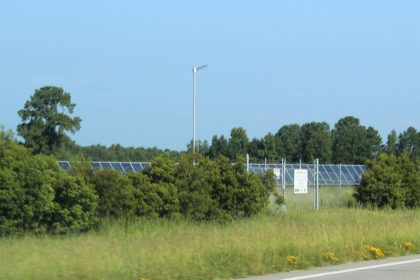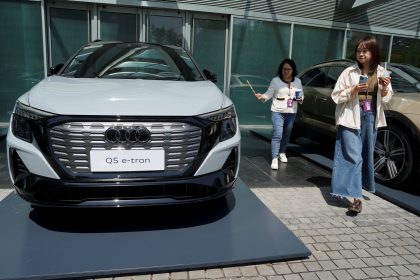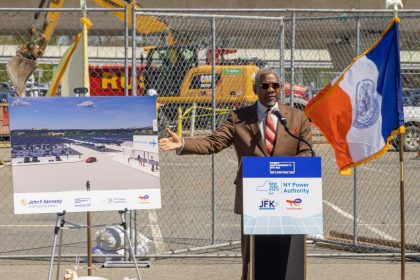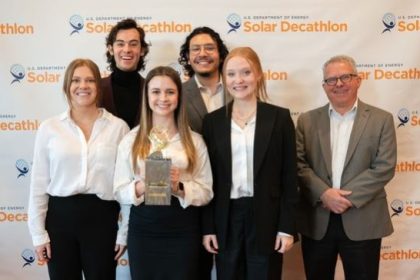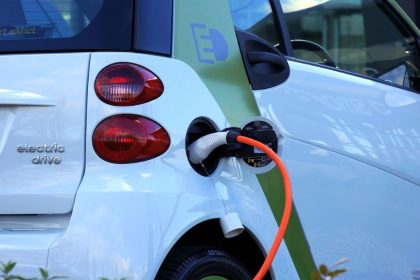Nine Companies Share in Offshore Wind Supply Chain Prize
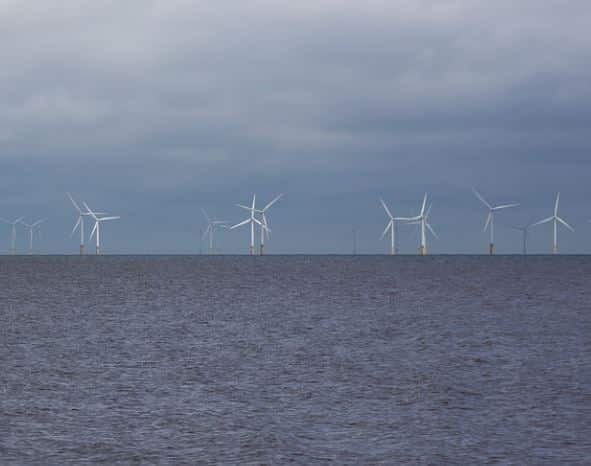
WASHINGTON — Nine companies will each receive $100,000 and vouchers for $75,000 in technical assistance after the beginning phase of a first-of-its-kind competition to tackle the floating offshore wind energy industry’s biggest supply chain challenges.
Roughly two-thirds of the nation’s offshore wind resource potential is in areas with water depths of over 197 feet, where floating offshore wind turbines are both more practical and cost-effective than fixed-bottom turbines.
The Department of Energy’s FLoating Offshore Wind ReadINess prize seeks to encourage project site developers, designers and fabricators to identify and address the supply chain challenges unique to this floating technology.
The Biden administration is hoping to have 15 GW of floating offshore wind turbines deployed by 2035, while reducing the cost of the technology by 70%.
“The winning teams all demonstrated designs that are realistic and represent progress toward wide-scale, domestic floating offshore wind energy manufacturing and deployment in the United States,” said Alejandro Moreno, acting assistant secretary for Energy Efficiency and Renewable Energy, in a written statement.
“They help lay the foundation for a thriving domestic offshore wind energy industry, which can provide clean, renewable energy to millions of American households, support good paying jobs, and revitalize port communities,” he said.
The nine winners of phase one of the competition are:
Aikido Technologies (San Francisco, California): The Aikido design is a steel semi-submersible floating platform made of steel tubes that can be manufactured at tower facilities.
Beridi USA (Spanish Fork, Utah): Beridi’s Triwind is a concrete-based floating platform that uses damping pools and buoyancy chambers to provide superior stability, limiting fatigue loading.
FloatHOME (Emeryville, California): FloatHOME’s triangular platform, WindFloat®, now in its fourth generation, provides deep-water stability through unique design features, including a damping system to absorb wave excitation movement.
OCG-Wind Full Cycle (Oakland, California): OCG-Wind Full Cycle’s prefabricated parts can be quickly assembled near the site of an offshore wind farm.
PelaStar (Seattle, Washington): PelaStar’s floating platform is a light-weight tension leg-platform design that minimizes environmental impacts while maintaining cost savings as well as manufacturing and installation flexibility.
Technip Energies (Houston, Texas): Technip Energies’ INO15 design is a semi-submersible, three-column floating platform. This design can be assembled at ports at low cost and is robust enough to withstand harsh operating environments.
Tetra Triple-One (Boston, Massachusetts): The Tetra Triple-One floating platform uses a building-block arrangement, which involves fully producing the parts needed in an industrialized manufacturing environment and then transporting them to the assembly site.
VolturnUS+ Domestically Produced Concrete Hull (Orono, Maine): This team focused on a simplified geometry for their concrete floating platform design, VolturnUS+. With a smaller hull compared to traditional semisubmersibles, the design streamlines construction and deployment processes and reduces costs.
WHEEL U.S. (Coral Gables, Florida): Incorporating tanks for buoyancy and balance, the ultra-stable WHEEL floating platform design can temporarily act as a barge platform, allowing it to be assembled with the wind turbine near shore and towed to sea. It is compact in size to reduce both costs and carbon footprint.
Winners from Phase One are eligible to move into the second phase of the competition, in which each team will develop a pathway for mass manufacturing and deployment of its floating offshore wind energy substructure design.
Phase Two will have up to five winners, each receiving $450,000 in cash and a technical services voucher valued at $100,000. The competing teams will be judged on their progress in developing a plan for mass manufacturing and deployment of gigawatt-scale, floating offshore wind energy farms.
The first-ever prize funded by DOE’s Wind Energy Technologies Office, the FLOWIN prize, launched in September 2022 in support of the interagency Floating Offshore Wind Shot. In total, the FLOWIN prize has a cash pool of $5.85 million, plus up to $1.175 million in technical support.
Dan can be reached at [email protected] and at https://twitter.com/DanMcCue



















